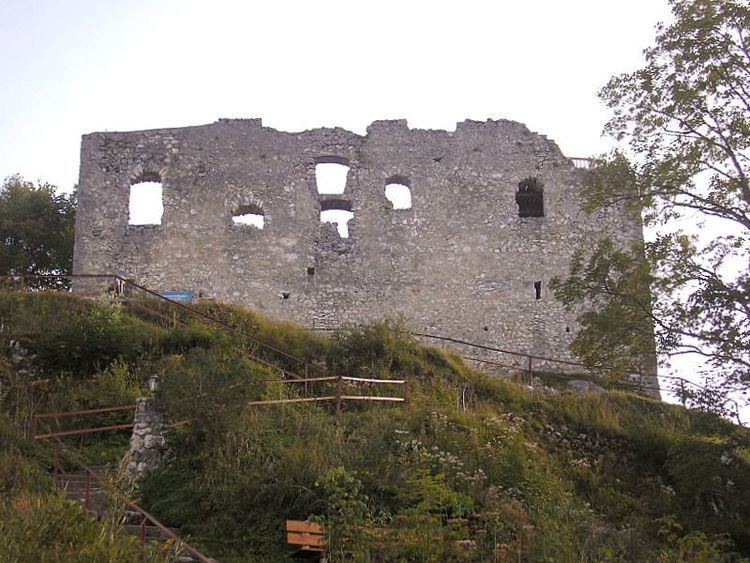Country Germany Completed Unknown; N/A | Construction started 1270-1280; 1885 | |
 | ||
Falkenstein Castle or Castrum Pfronten is a High Middle Ages castle ruin in the Bavarian Alps, near Pfronten, a town in southern Germany. The ruin's German name is Burg Falkenstein ("Castle Falcon Stone"). At 1,268 metres (4,160 ft) above sea level, it is Germany's highest castle.
Contents
King Ludwig II of Bavaria purchased the ruin in 1883 and planned to transform the site into a magnificent fairy tale schloß. However, the plans were abandoned upon his death in 1886.
Castrum Pfronten
Originally known as Castrum Pfronten, the stone castle was built approximately 1270–1280 by Count Meinhard II of Tyrol on the borders of his land. Because of the unusual situation of the castle it has been interpreted in historical context as a symbol of opposition to the Duchy of Bavaria. (During the winter the castle was dangerous to inhabit because of the high altitude at which it is located.) The name Castle Falkenstein only came into use in the 15th century. The castle was largely destroyed in the 17th century.
Ludwig's vision
King Ludwig II of Bavaria purchased the ruin in 1883 and commissioned several architects, the first being Christian Jank (the designer of Neuschwanstein), to replace the existing structure with a romantic castle.
Jank first created a restrained design, but later envisioned the castle in a dramatic, High Gothic style. Georg Dollmann was employed to produce plans and elevations in the same year based on Jank's design. However, his modest and economical designs displeased Ludwig.
The task of redesigning Falkenstein was then given to Max Schultze, the Prince Thurn und Taxis' architect, who was flattered by the royal commission. He not only planned the architecture of the castle in a robber baron's style (a highly simplified version of Jank's sketch), but also began creating the castle's interior design and frescos (in a secular Byzantine style) with the help of August Spieß. Of particular note was Ludwig's bedroom, which was reminiscent of a vast chapel. During this time, in 1884, road and water lines were made to service the site and a papier-mâché model of Schultze's plan was created. However, Schultze withdrew from the project in 1885.
Julius Hofmann and Eugen Drollinger were chosen to succeed Schultze, although they knew that it was unlikely Falkenstein would ever be built. Thus, they made their designs as spectacular and impractical as they wished. Drollinger was working on a plan of Ludwig's bedchamber - redesigned to feature stained glass windows and a mosaic dome - when he learned of the King's death.
Ludwig died in 1886 before work on the castle proper could begin, and the many plans for Falkenstein were permanently abandoned. The ruin of Castrum Pfronten on the building site was never demolished.
Popular culture
The name and background of the castle have inspired Castle Falkenstein (abbreviated CF), a steampunk-themed fantasy role-playing game (RPG) designed by Mike Pondsmith and originally published by R. Talsorian Games.
